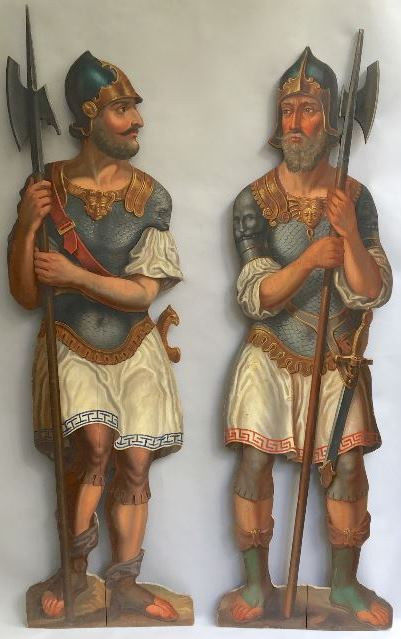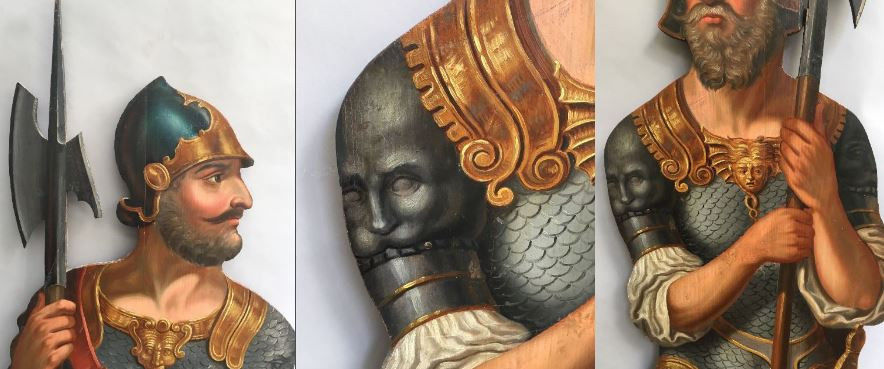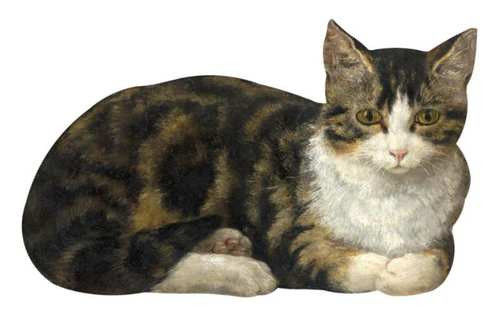The Pleasure of a Silent Companion
During the PAN Art Fair 2017, one will find many interesting items worth writing about. A real eyecatcher this year can be found in the booth of the eminent antique dealer Robert Schreuder (stand 45). Two painted wooden soldiers know as ‘dummy boards’ are presented here, a pair which is sure to intrigue just about anybody:
During the 18th and 19th centuries, these decorative objects were highly fashionable among the European elite, especially among the English and the Dutch. Dummy boards are life-size, flat, wooden figures painted and shaped to resemble figures of servants; soldiers, children, animals, tools, plants and even ship models. The origin of these life-size wooden figures most likely originated from the tromp l’oeil paintings made in the 17th century in the Netherlands. Dutch painters such as Jacob de Wit (1695-1754) were especially famous for their beautiful paintings en grisaille.

Attributed to Johannes Cornelisz. Verspronck (Haarlem, 1600-1662) -
Dummy board of a sleeping boy in his high chair ca. 1650, oil on panel. Private Collection.
Dummy boards were produced up until the 19th century. They were often placed in the corners of rooms and on stairways to surprise (uninvited) visitors. They were also known to reside in-front of empty fireplaces during the summer months. Some even suggest that the figures were used to ‘protect’ the house when the owners were away.

The quality of these early dummy boards is often quite high, and according to the Victoria and Albert Museum, these painted wooden figures and animals were made by professional sign-painters who also produced hanging street signs, up until the late 18th century. However, it was at the beginning of the 19th century that the mass production of these objects greatly reduced their quality, and as a result, the objects were deprived of their value and inevitably fell out with the bourgeois. Many contemporary dummy boards left these homes to become menu holders in restaurants, and advertising signs on city sidewalks.
The original dummy boards popular in the 18th century were made in different sizes and qualities. The soldiers that are guarding the stand of Robert Schreuder Antiquair are of a very fine quality. The guards each wear a harness, the style of which is a mix of the Classical period, the late Middle Ages and the Renaissance. The armour is halberd, based on a model from the late 15th or early 16th century. At the time these two guards were made, the Classical period was in its revival phase known as Neo-Classicism, and as a result, this style was extremely popular among affluent society members.
Detail of the dummy boards at Robert Schreuder Antiquair
Another interesting fact; is that some dummy boards provide a great impression of what would have been fashionable at the time of production. From maids to noblemen, and babies to soldiers; all kinds of figures were depicted. Some evidence suggests that many were made as a pair or couple copied from known paintings of the 18th century or earlier periods.
Animal dummy boards were also extremely fashionable during the 19th century. The famous Dutch-Belgian society artist Henriëtte Ronner-Knip (1821-1909), renowned for her lively paintings of animals, made an iron painted dummy board of a cat around 1900. This life-size cat (18,5 x 30 cm) was given to the family Six by Agneta Blaauw, and is still 'living' in the Six Collection located in Amsterdam.
Henriëtte Ronner-Knip- iron painted dummy board of a cat, ca 1900. Original at Six Collection Amsterdam.
For those who fall in love with this cat; you can find a copy of the dummy board at Scriptum Art (stand 136) at the PAN Art Fair, or you can click here for more information.
For more online art have look at our fine art collection at Gallerease!

